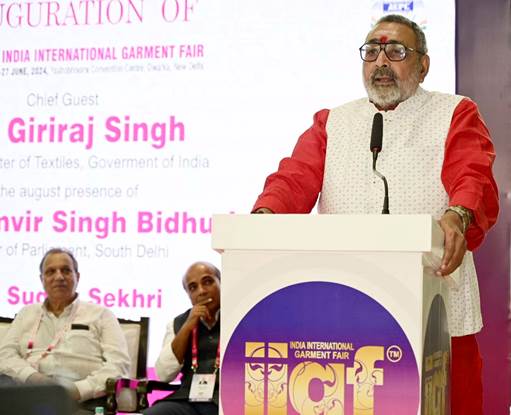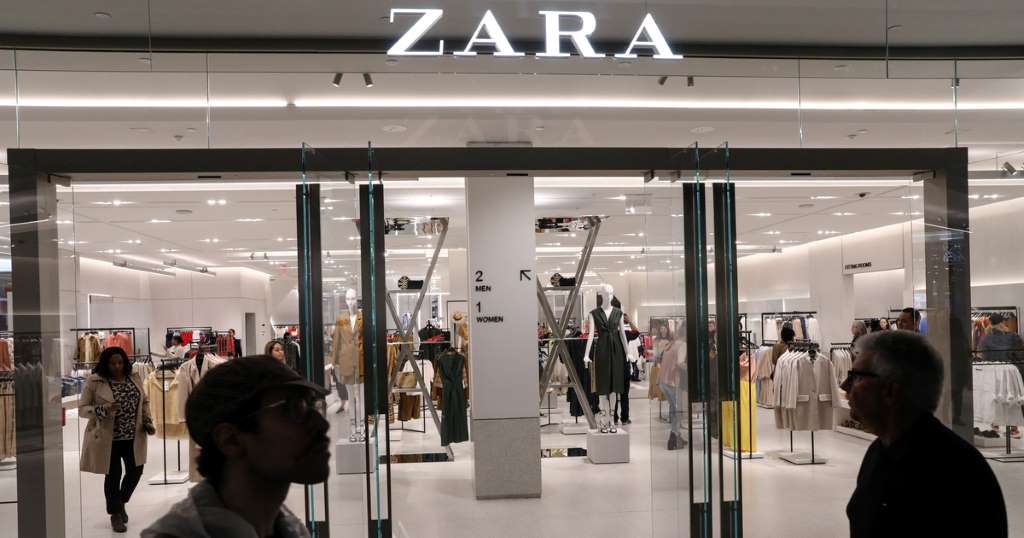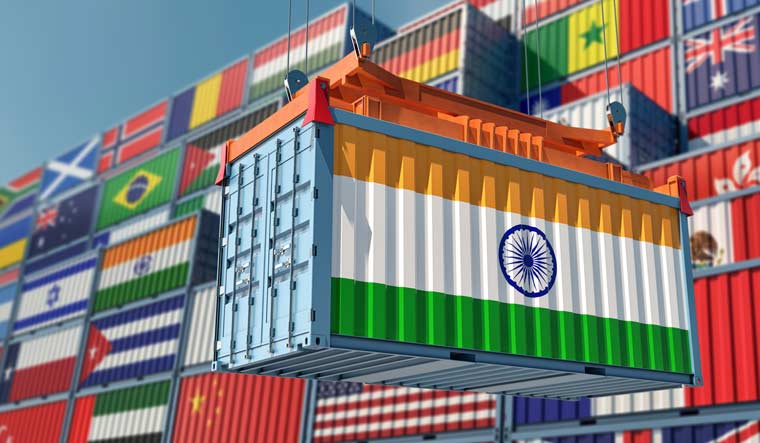FW
The US Federal Trading Commission (FTC) has updated it textile labelling rules on fibre content and country-of-origin disclosures. The new rules implement the Textile Fiber Products Identification Act, which requires that certain textiles sold in the country carry labels showing the generic names and percentages by weight of fibres, along with the manufacturer or marketer name, and the country where the product was processed or manufactured.
The changes will see the incorporation of International Organization for Standardization (ISO) 2076 standard for generic names for manufactured fibres, thus allowing greater harmonisation across the global apparel industry. And hang-tags will be allowed to disclose fibre names and trademarks, and performance information, without the need to disclose the product's full fibre content.
The country-of-origin disclosure clarifies the origin of the country where products were processed or manufactured. A strongly opposed proposal that would have required annual renewal of continuing guaranties, a form completed by sellers to guaranty products are compliant with the law, was not included in the final rule.
According to the American Apparel & Footwear Association (AAFA), which had opposed the proposal, while these guaranties are an important part of the legal process, a requirement for annual renewal would have attracted significant compliance costs on businesses, without increasing the reliability of the guaranties.
www.ftc.gov
Milano Unica, the trade show dedicated to Italian high-end textiles and accessories concluded in China recently. The show showcased the Spring/Summer 2015 collections of Italian textile supply chain. Nearly 124 exhibitors from the Italian textile districts brought the excellence of ‘Made in Italy’ products to China with an increasing number of textile manufacturers specifically dedicated to women’s wear.
The biannual event witnessed over13.3 per cent rise in visitors against March 2013 edition. Compared to the October 2013 edition, which showcased the Fall/Winter 2014-’15 collections, attendance was steady. Organisers say the data confirms the trend of the Chinese market, reflecting increased quality of Chinese apparel production, increasingly oriented towards higher standards in terms of quality, innovation and service.
The response towards women’s wear exhibitors from visitor traffic reflects an increase in interest. Milano Unica China started as an event mainly dedicated to men’s wear, but now it is seeing women’s wear posting significant growth and increasing its market share. The presence of international buyers from other Asian markets, like India, Japan and Australia, in addition to Russia, the US and Scandinavia is also on the rise. The next edition in China is scheduled for October 20 to 23, 2014 at the Shanghai New International Expo Centre.
www.milanounica.it
The International Textile Industry Exhibition Baltic Fashion & Textile Riga 2014 will take place from April 4-6, 2014 at the International Exhibition Center in Kipsala, Riga. For the first time Latvian and Lithuanian organizers of the biggest textile industry exhibitions have joined forces to present the achievements of Baltic textile industry and the competitiveness of its products, and introduce the versatility and high quality of local products.
Professionals would present their products and services, network and look for new contacts and cooperation partners, find out the novelties of industry by attending international conference and workshops and see the latest creations of young fashion designers during the competition ‘Habitus Baltija 2014’ that is organized in the framework of Riga.
The exhibition would display a range of fabrics such as: wool, alpaca, angora, cashmere, cotton, linen, silk, viscose, acetate, polyamide, nylon, polyester, triacetate and mixed fiber fabrics for sewing and manufacturing of men’s, women’s and children’s clothes, knitwear, lingerie, bed-clothes and home textiles, as well as sewing accessories and materials. The exhibitors would be from Germany, Italy, France, Sweden, Belarus, Uzbekistan and Lithuania.
An Innovation Stand is being established by the Latvian Technological Center, the Enterprise Europe Business Network Latvian cooperation with the Latvian Association of Textile and Clothing Industry. This is the place for professionals to meet all parties involved in the textile innovation process, experts of education, research, patenting, incubation and other areas.
www.b2match.eu
Though British retail clothing chain Primark has already spent more than $3 million for short-term assistance to victims of Rana Plaza building tragedy in Bangladesh, the retailer has announced an additional $10 million compensation to the victims. The company would start giving away payments to the 580 victims or their dependents who were working for Primark's supplier New Wave Bottoms.
The payment will be made in cash according to the impact of the injury and level of disability resulting from the collapse or in the case of dependents of those who lost their lives in the tragedy, estimates of lost earnings. All workers and dependents will be paid within 12 months.
Primark also announced a further payment of $1million to workers in its competitors' supply chain. This money will be paid to the Rana Plaza Donors Trust Fund chaired by the International Labour Organisation (ILO) for distribution.
Five global clothing brands and retailers recently raised $40 million for victims of the Rana Plaza factory disaster in Bangladesh. The companies, who have raised funds, include El Corte Inglés; Inditex, which includes the brand Zara; Loblaw; Mango and Mascot. Now labour groups are pressurizing companies like Walmart, Children's Place and Benetton, which were linked to Rana Plaza tragedy.
www.primark.com
After a string of factory tragedies in Bangladesh claimed over 1,000 lives, many global brands sourcing their requirements from the country have put in efforts to improve working conditions in factories. Efforts are also being made to improve and strengthen fire and building safety standards in the apparel industry. As a part of these initiatives, Eric Wiseman, VF Corporation’s Chairman, President and Chief Executive Officer has announced steps that they have taken to make factories safer both as a corporation and as a member of the broader brand and retail initiative the Alliance for Bangladesh Worker Safety. These include a hybrid model that combines VF’s own manufacturing practices with those it requires of its contractors.
VF, Walmart Stores, Target Corp and Gap launched an alliance last July in the wake of Bangladesh factory tragedies. After calamity struck the Asian country, there was a huge hue and cry over reforms required to be put in place in the Bangladeshi apparel sector. So, the global fashion industry along with labour organisations and international NGOs have been working towards implementing new safety plans and reforms to provide a safe work environments.
VF in particular, under the company’s ‘Third Way’ program is currently building a factory in Bangladesh that looks and runs like a VF-owned and -operated factory. The factory currently under construction in Bangladesh, to be operated by The Rising Group, is the first in that country to be built under VF’s program. Though the factory would be run by the Rising Group, it would adhere to VF’s manufacturing expertise.
www.vfc.com
While the nationwide garment factory strike that was organized in Cambodia was expected to make an impact with most of the factory workers joining, after the first day, it fizzled out. Though two union leaders claimed that hundreds of thousands of workers joined the agitation on its first day, only a few factories reported work stoppages. Cambodian Alliance of Trade Union said that workers joined back work since the Ministry of Labor promised to look into workers’ salaries.
Since an earlier round of minimum wage protests were violently suppressed in January, the government has refused to restart negotiations between workers and employers over a higher minimum wage, which is currently at 100 dollars per month. The group of eight unions and at least eight labour associations have said that another round of stay-at-home strikes following the Khmer New Year, which begins on April 14. About 600 workers held an unrelated protest outside the E-Z International Garment factory in Phnom Penh’s Pur Senchey district on Thursday morning demanding that management meets their 17 demands. The demands include a 6 dollars monthly health stipend, a daily 1 dollar meal allowance, a 10 dollars monthly transportation stipend and the construction of additional toilets in the factory.
www.opendevelopmentcambodia.net
Eurojersey, an Italian warp-knitted fabrics producer has unveiled its new Sensitive Fabrics campaign. Its aimed at environmental sustainability. Working towards the cause of eco-sustainability since 2008, Eurojersey has always showed its commitment towards balanced and sustainable growth. The new campaign is highly visual to create maximum impact. The headline reads ‘Sensitive for Nature. Fabrics for Passion’, which expresses its mission of being sustainable and care for sensitive fabrics. While in some cases images are associated with moments of ecological disasters; in others they are full of hope and positive thinking.
With messages like ‘Beware What You Wear’, ‘Together we can safeguard nature’, ‘Your choice makes the difference’, the company tries to create awareness among the consumers about how to choose quality and how one can make a difference in protecting the environment, through its new campaign. The company believes that sensitive fabrics stand for high quality making a low impact on the environment and fabrics quality of sensitive fabrics is a statement of commitment to large-scale sustainable production.
As per recent reports, Vietnam’s apparel and textile exports would see a healthy 10 per cent rise to $23 billion this year. However, experts have cautioned against rising raw material imports, power and transportation costs, which could play a spoiler in the long run.
According to the National Garment and Textile Group Vinatex, since the sector is overly dependent on raw material imports to meet its production, it leads to significant rise in costs. Also, rise in electricity and transportation costs are putting additional pressure on the cost of production.
Vinatex report points out that the sector lacks trained workers and has an uneven distribution of workers throughout the country. Experts feel there is also a need to improve design and product quality, while curbing smuggling and black market activities, to compete in the export market. The industry’s aim of becoming a full member of the World Trade Organization (WTO) by 2018 and can be fulfilled if the country works on improving all these aspects.
Vinatex says that its priorities are to maintain an export growth by focusing on increasing the rate of growth in original design manufacturer (ODM) products to 12-14 per cent. As for Free-on-Board (FOB) products, the group must optimise orders to bring added value to their products. The industry body will also try to duplicate a production model in 2014 which has been applied successfully in similar businesses to reduce stockpiles, improve labour productivity and increase competitive edge of products apart from increasing raw material production base and better co-ordination between the textile and apparel manufacturers and exporters.
www.vinatex.com
Cambodian garment manufacturers and the association that governs them are failing to meet the standards set by UN’s Guiding Principles on business and human rights. This was evident by the lethal violence against workers during garment strikes in January, when five people were shot dead and scores wounded by state forces, the International Federation for Human Rights (FIDH) has said.
The Cambodian garment sector is ‘mired in ongoing human rights violations’ and the Garment Manufacturers’ Association in Cambodia (GMAC) has ‘refused to condemn the lethal use of force against striking workers,’ a briefing paper released by FIDH stated. “Cambodian manufacturers and GMAC have clearly failed to respect workers’ rights,” in light of the guiding UN principles, the statement said, adding, “Brands have failed to prevent and mitigate adverse human rights impacts by their business partners, and have failed to exercise leverage with Cambodian suppliers and business associations to prevent such abuses.”
In addition, the report says that over 100 GMAC-affiliated factories sued six of the trade unions involved in organizing December’s strikes. However, FIDH also adds that the “victims of state repression and companies’ retaliation following garment workers’ legitimate exercise of their right to strike” are unlikely to receive proper or fair redress though the courts.
Criticizing the report, GMAC Chairman Van Sou Ieng has said that FIDH must prove the allegations against the association and cannot accuse other without evidence, under the name of human rights.
He further said the International Labor Organization’s (ILO) Better Factories Cambodia program has concluded every year for the past 12 years with 85 per cent of all the factories getting inspected in compliance with the labour law and the international core labour standards. He has also challenged the authors of the FIDH to identify another country with such a high rate of compliance.
www.fidh.org
 Cotton is a principal cash crop in India and a major raw material for the domestic textile industry. The textile industry in India contributes about 14 per cent to the industrial production, 4 per cent to the GDP and 11 per cent to the country’s export earnings. It’s the second largest employment generator after agriculture. Hence, growth and all around development of cotton and cotton industry has a vital bearing on the overall development of Indian economy.
Cotton is a principal cash crop in India and a major raw material for the domestic textile industry. The textile industry in India contributes about 14 per cent to the industrial production, 4 per cent to the GDP and 11 per cent to the country’s export earnings. It’s the second largest employment generator after agriculture. Hence, growth and all around development of cotton and cotton industry has a vital bearing on the overall development of Indian economy.
Rise in cotton production
India is the only country to grow all four species of cultivated cotton: Gossy 
piumarboreum and herbaceum (Asian cotton), G. barbadense (Egyptian cotton) and G. hirsutum (American Upland cotton). India produces a large number of cotton varieties and hybrids. Cotton is produced in three zones: North, comprising of Punjab, Haryana and Rajasthan; Central, comprising of Maharashtra, Madhya Pradesh and Gujarat and South, comprising of Andhra Pradesh, Karnataka and Tamil Nadu. Besides these nine states, cotton cultivation has gained momentum in Orissa as well.
With increased acreage and advent of Bt cultivation, the country produced 5.90 million metric tons of cotton in 2011-12 as against 5.76 million metric tons in the previous year. India has once again retained its position as the second largest cotton producing country in the world, after China.
In 2012, in the first half of the year from April to September, due to piling up of inventory, demand for yarn both domestically and internationally was subdued faced with high raw materials prices and difficulties to access credit by spinners, declining prices of cotton yarn and competition from chemical fibres. Subsequently, with a slowdown in demand and large finished goods inventory, capacity utilization by spinning mills dropped down to one-third of optimal utilization, thereby further declining the operating profit margin of spinners.
However, with a view to arrest downward pressure and help stabilize prices of cotton and cotton yarn, the government India reinstated DEPB benefits on export of cotton yarn and cotton and removed cap on cotton exports. Still the operating profitability of spinners remained under pressure which affected overall demand for cotton domestically and internationally the mills preferred to purchase cotton to meet immediate requirements rather that building lean season requirement. However the Cotton Season 2012-13 has seen an improvement in domestic consumption at an estimated 256 lakh bales as against 253.4 lakh bales in 2011-12.
Export-import measures
The government had decided to allow exports of cotton under
OGL subject to prescribed registration procedures from October 1, 2012 for the cotton season 2012-13.There was no export demand in the initial months
for Indian cotton, due to global over stocking by countries like China. Imports of cotton into India fall under Open General Licence (OGL) since April 1994. The government abolished import duty of 10 per cent along with countervailing duty of 4 per cent on cotton imports. Thus Indian mills now import cotton without any restrictions from anywhere in the world.
Texmin.nic.in












